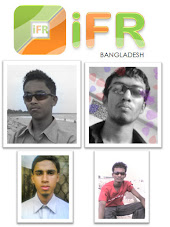Inside Games: The designer
The games industry employs a diverse range of people in a number of different roles.
Over the next few months, BBC News is going to profile a range of jobs in the industry, as well as the firms themselves; talking to the people who actually do the work as they tell us what exactly they do.
Over the past 10 years, UK development studios - by and large - have been taken over by global games publishers, retaining their name and staff, but producing games almost exclusively for that publisher.
But there are some notable exceptions to this rule.
In the centre of Guilford, deep in the heart of Surrey, sits the corporate headquarters of games giant Electronic Arts.
Within the walls of this new building, beneath the corporate branding, marketing posters, and coffee stands is a fairly new player to the UK development scene: Bright Light Studio.
Set up in 2007, it now employs more than 100 people working on family friendly titles, such as Harry Potter and Hasbro licenses.
Unlike other studios, which expanded from humble beginnings, Bright Light Studios was jump-started by Electronic Arts after the firm bought UK developer Criterion Games (best known as the developer of the Burnout series)
Harvey Elliott, Bright Light vice president, said that creating the studio within Electronic Arts, but stepping slightly back from the EA brand, was a deliberate one.
"Everyone at EA is proud to be part of EA but you also want something unique to you, that separates you from the thousands of other people who also work for EA," he said.
Bright idea
Creating a studio, that specialises in a theme or genre - in Bright Lights case family friendly games - is not new. However, creating one within an existing brand is.
A trailer for the new Harry Potter game
As a dedicated development studio, the majority of staff working for it are tasked with making games.
"About 30% are engineers, 35% artists and 35% in design, production and management.
"We also have a handful of audio artists who support all the projects," said Mr Elliott.
The firm has just finished work on the latest Harry Potter game - Harry Potter and the Half-Blood Prince - which is due for release, on all formats, at the same time as the movie.
"Harry Potter is a high revenue franchise, its retail revenue is over $1bn and sold more than 40m copies, so it's a great project," said Mr Elliott.
With big money comes big expectations and big production values. The days of someone being able to produce a game in the bedroom and then make a fortune were long gone, he said.
"These days we're talking millions to produce a good game," said Mr Elliott.
For Bright Light, the development time for a game is limited to the space between movie releases. While that does put pressure on developers, it also means there is "considerable synergy" between the film makers and game studio.
"There are some things we can do that the movie studio can't," said Mr Elliot.
"For example, we can create the whole of Hogwarts in a 3D model and run about in it."
Inspired by...
The game itself is based on the Harry Potter movie, but the events and game play are not an exact recreation of the film.
Instead, the game lets the player wander round an accurate representation of Hogwarts, with in-game tips coming from the Gryffindor House ghost, Nearly Headless Nick.
While the linear progression through the single player game might not appeal to hardcore gamers, Bright Light says it is aimed at a younger mass market audience.
There are also three mini games - duelling, potion-mixing and Quidditch- scattered through the main game which give the missions a novel twist.
There is also - for the first time in a Harry Potter game - a two player option, where opposing players duel each other in casting spells. Given that the single player campaign only lasts about 14 hours, this should give the game a bit more longevity.





No comments:
Post a Comment